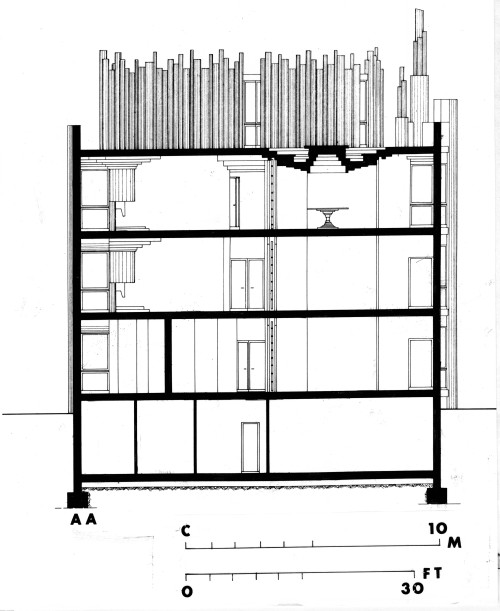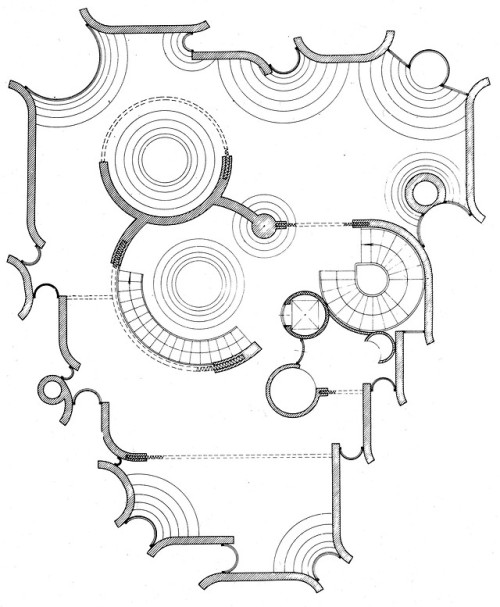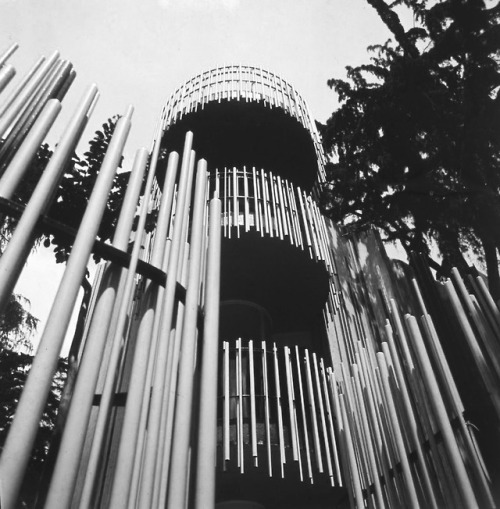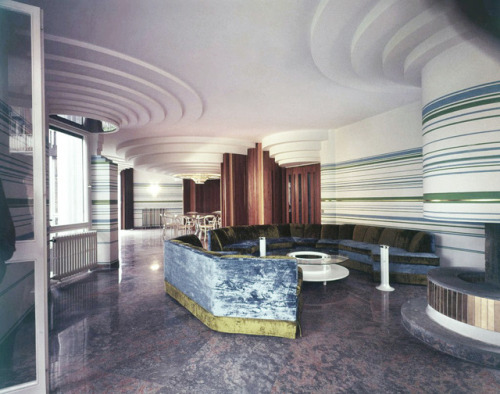#architecturepolitics
Organic Architecture
Paolo Portoghesi + Victor Gigliotti: Papanice House. 1966-1970.
This is Paolo Portoghesi and Victor Gigliotti’ s Papanice House designed by architect Paolo Portoghesi and engineer Victor Gigliotti in early 70s. A Magnificent manor house with great Baroque influence, with art deco and secessionist touches, enveloping elegance and rhythm.
As you can see on the diagram “The Matrix of Composition” you can see how curved lines flows beyond the building with a very unique language of composition.
This is a very atypical house with three levels, with one room per floor and a small attic. Portoghesi’s concept stands on his influence of Baroque style, it could be seen on the systematic use of the curved line on the modeling of the interior space but also in facades. The curvature of the perimeter walls which alternate between concave and convex formally characterizes the composition, the rythim of the entire skin flows with elegance also the interiors have strong art-deco reminiscences from color details to furniture.
Would like to see how this house got old through years. Certainly curved lines as strategy of design becomes a coherent aesthetic compromise between nature and culture inherited into history.
Image1,8. Geometric Diagram.The Matrix of Composition. Papanice House. Portoghesi and Gigliotti. Von Meiss, Pierre.,1989, Elements of Architecture: From Form to Place, Van Nostrand Reinhold, N.Y., figure21.
images 2-7. Roof plan, Cross Section, Main Floor Plan, Second Floor Plan, aerial view, facade view.: ROSSI, Piero Ostilio. Roma. Guida all'architettura moderna 1909-2011. Roma: Laterza, 2012. also NORBERG-SCHULZ, Christian. Paolo Portoghesi architetto. Milano: Skira, 2001

Architecture & Politics
Paolo Portoghesi + Victor Gigliotti: Casa Papanice. 1966-1970.
From plenty beauty to decadence.
Sometime ago i was wondering how Casa Papanice will evolve as a manor house, does it will remains the same with different uses? does it has taking a good preservation process? so, i have news and facts about.. and the answer are sadly negative.
This is an attempt to show you how the importance of architecture’s preservation and maintainance of singular houses are. This is Casa Papanice, a very unique 70s Italian House designed by Paolo Portoghesi, as you can see in the image above Casa Papanice is actually in a deplorable state of conservation and essential elements of its facade where substituted.
The main problem propably right now Papanice House is actually another country legally, in this house lays the Jordan Embassy. But that fact should not exempt its inhabitants from the duty to keep the house.
We hope DOCOMOMO Italy and other Architectural Preservation Associations around the world could spread, help and save from decadence this unique architectural pearl.
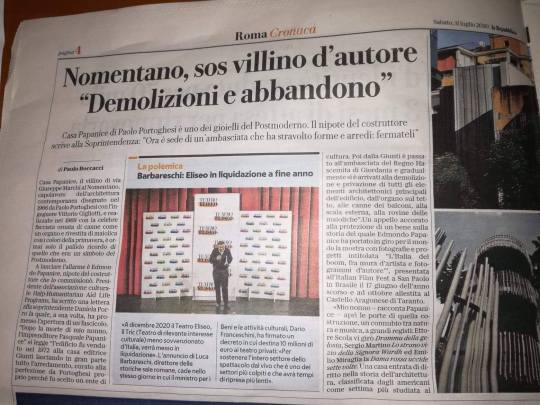
If you need more info, here’s an article written by Paolo Boccacci at Republica Newspaper (IT) +
We’ll be observing how this case evolve, while time runs you can follow @Casapapanice at RRSS +
Post link
Arata Isozaki: Re-Ruined HiroshimaImagine how should we as architects rebuild cities starting from ruins.Here are some examples from Arata Isozaki’s megastructures which reminds this situation, but first we mustrealize what Isozaki wrote forty years ago, curiously it is what happens in some regions of the world right now:
“Incubated cities are destined to self-destruct , ruins are the style of our future cities, future cities are themselves ruins, our contemporary cities, for this reason, are destined to live only a fleeting moment, give up their energy and return to inert material. All of our proposals and efforts will be buried and once again the incubation mechanism is reconstituted, that will be the future.” Arata Isozaki.
“Ruins are dead architecture”. Arata Izozaki.
Post link


